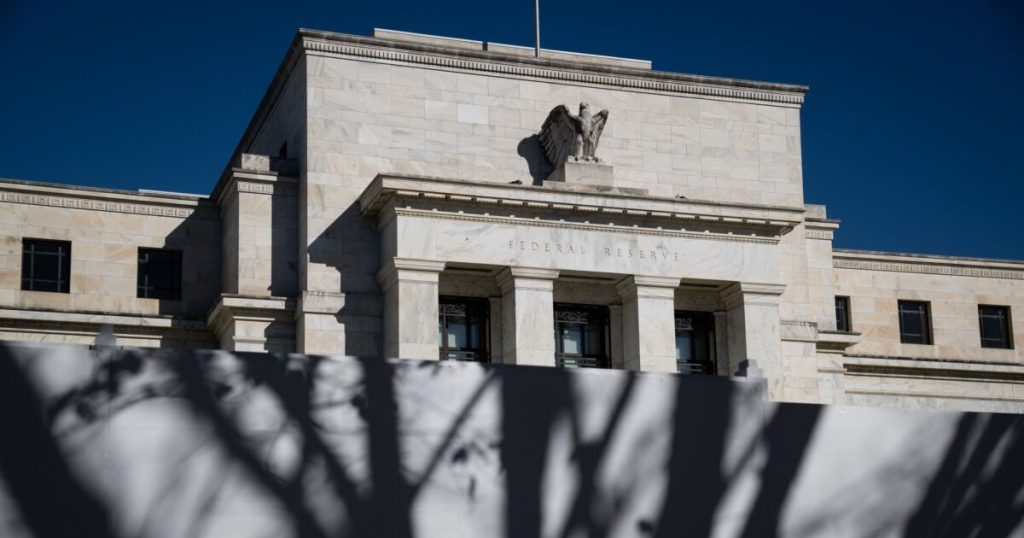Graeme Sloan/Bloomberg
For financial institutions, and banks in particular, the challenge of
These questions, of course, aren’t new, but the context in which they’re asked is shifting in unprecedented ways. The next five years promise a challenging paradox: markets that appear stable on the surface coexisting with the potential for
Beyond recognizing and managing its own exposure to economic instability, a bank must assess how its customers are coping and how they’re likely to fare going forward. Some stress points are readily apparent, e.g., importers exposed to regions facing rising tariffs; manufacturers dependent on foreign components with limited ability to substitute; and consumer-facing businesses navigating higher input costs without clear paths to pass those costs along. These pressures can ripple through a balance sheet quickly, especially when external shocks expose underlying fragility. In this environment, understanding individual customer dynamics is not just prudent, it’s essential.
Some customers will be affected by multiple policy changes simultaneously, compounding their stress. Consider, for example, small businesses that rely on government contracts or serve individuals facing job loss or shrinking household budgets. These firms may face both a direct loss of business and margin compression, especially if they’re forced to raise prices due to higher input costs, further weakening demand. Another growing concern is deferred investment. Many businesses are holding back on capital spending in response to mounting policy uncertainty, unsure of how shifting regulations, trade policy, or fiscal priorities will affect their sectors in the months and years ahead.
Another challenge facing financial institutions is the risk of being misled by headline economic data. Too often, official government statistics paint an overly optimistic picture, particularly for middle- and lower-income households and small businesses. Inflation is a case in point. The Consumer Price Index, or CPI, tracks a basket of more than 80,000 goods and services, but the items actually purchased by lower-income consumers often represent a much narrower and more inflation-sensitive subset. In my experience, those essential goods and services have been
This matters because policymakers, economists and risk analysts relying on headline metrics may fail to see the full extent of stress building beneath the surface. For banks, it means that certain borrower segments — particularly those already economically vulnerable — may be far more distressed than the top-line numbers indicate.
But the impact of economic instability almost never ends with a single borrower. Stress compounds and spreads. Banks may face not only risk from directly affected clients but also from downstream customers, suppliers and secondary exposures connected through the broader economic ecosystem. A small business under pressure may pass along higher prices, causing its customers to pull back; a delayed payment from one client may trigger cash flow issues for another. This multiplier effect can make portfolio-level risk appear more diffuse than it truly is — until it materializes all at once.
It’s also worth acknowledging that policy shifts could move in a more stimulative direction. This administration appears more open to accommodative monetary policy than its predecessors. Should interest rates fall significantly, many borrowers currently holding on by their fingertips could find relief. And a more accommodative monetary policy could fuel a housing upturn, something our economy has needed for some time. But lower rates may also fuel asset bubbles and sow the seeds of longer-term instability. Today’s winners may be tomorrow’s risk.
In such an environment, the most prudent strategy for banks is neither retreat nor overreaction. It is vigilance at the most granular level. Many bankers I know are already doing what I believe the moment calls for: a meticulous, ongoing review of individual customers and customer groups, not simply sector-level exposures. The traditional tool kit — credit models, economic forecasts and sector risk ratings — must now be paired with hands-on, borrower-by-borrower understanding.
Finally, banks must not be lulled into complacency by today’s lighter-touch regulatory climate. The pendulum always swings back, and history shows it rarely does so gently, especially in the wake of a financial crisis. After every bout of deregulation comes a reckoning, whether it’s Pecora’s hearings in the 1930s or Sarbanes-Oxley in the early 2000s. The time to prepare is not when the crisis hits but well before.
My take on where we are may sound overly gloomy or at least overly cautionary. As a former regulator and banker in challenging times, I’m shaped by experience. However, even for those who are fans of the profound reordering of government policy now underway, it’s worth remembering that massive change — however well-intentioned or beneficial in the long run — can cause serious short- and mid-term disruptions. We have to be prepared to confront those disruptions sooner rather than later, while there’s still time to adjust course and avoid avoidable mistakes.

